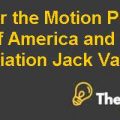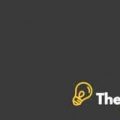
Tata motors in 2014: its Multiband approach to competing in the global automobile industry Case Solution
Identification of the problem:
Tata motors were established in 1945 when Tata engineering and locomotive company started manufacturing locomotives and engineering products. Tata was India’s leading automobile manufacturer by revenue and was placed at the third position in the passenger vehicle category brand in India in 2012.
Unfortunately, the company’s major brand started to decline both domestically and globally and the third position was also lost to Honda in India in terms of sales. Similarly the company’s sales were decreasing in the commercial vehicle segment in 2013 and 2014. As a result the company’s position dropped from the fourth largest seller of commercial vehicles to fifth.
There were some macro-economic factors associated in the industry in India as well such as increasing competition in the automobile industry and various other factors such as the possible elimination of diesel subsidies by the Indian government. Usually these factors had substantial effect on all the businesses involved in automobile manufacturing, but Tata motors was being affected the most because there was lack of strategic planning and the strategy which it was using was ineffective as compared to the rest of the players prevailing in the market.
India’s economy recovered from the global recession quickly because of high domestic demand of goods and services with economic growth over 8%. In 2011 this growth decreased due to lack of progress on economic reforms, high interest rates and a consistent increase in inflation and the figure of economic growth decreased to 5% in 2012 and 2013. The manufacturing and mining sector known as the key sectors in Indian economy also showed a decline, growth in several developed markets also declined, which made the Indian market less attractive for foreign investors.
Auto sales in India broke the record in 2012 and due to that consumers increased their purchases specifically of diesel vehicles as they that they knew the government would raise taxes on diesel vehicles in the next fiscal year, similarly increase in loan rates and fuel prices decreased the demand for cars in 2011. Fuel prices severely affect the Indian economy because when prices are high consumers demand less and when prices are low consumers’ purchases increase, hence causing a boom in sales for the automobile manufacturers.
Tata motors’ strategy for its passenger car division was keyed to leveraging its broad product line and focusing severely on value including fuel efficiency because the Indian market is very sensitive when it comes to fuel efficiency and people demand for those cars which are fuel efficient, or in other words it can be said that it is a price sensitive market and demand fluctuates with the price. The passenger vehicle strategy focused on aggressive growth of new vehicles’ sales and an extensive service network that would improve customer care services and increase sales and brand image. Tata owns several giant brands which cater to the international markets for international growth in developed markets such as the BRIC countries, brands such as Jaguar and Land Rover have been acquired for catering the international markets.
Tata has a brand named as Tata nano which is a great innovation in the Indian automobile industry. This car was for the middle class people who used to travel on bikes, scooters along with their families which were quite unsafe as stated by Mr. Ratan Tata, the chairman of Tata motors.
The main strategy was to switch customers towards buying a car. As Tata motors’ unique selling proposition is based on cost differentiation, therefore the company came up with a vehicle which was affordable for the middle class people. Moreover, the vehicle’s base price was set for $2500 which could be easily purchased by middle class group. Tata motors set this price after extensive market research on consumers’ needs, wants, purchasing power, likes and preferences..................
This is just a sample partial case solution. Please place the order on the website to order your own originally done case solution.









